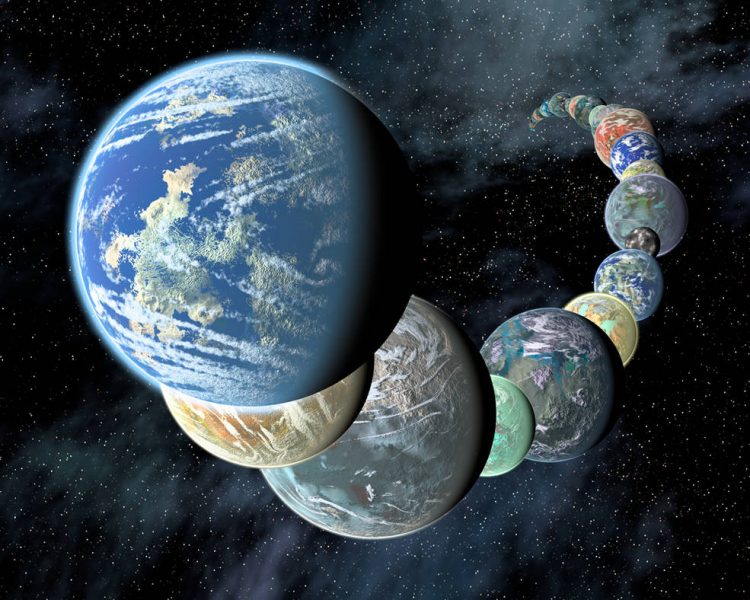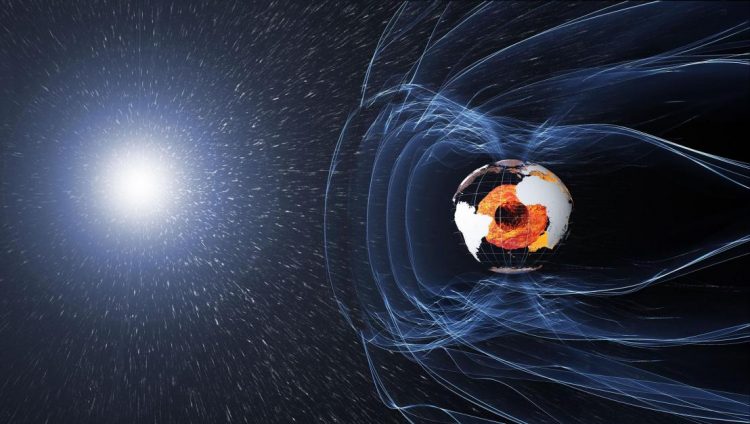What has Earth’s Magnetic Field Ever Done for Us?
16 Feb 2022|Claire Nichols
- Research

All of us have pondered whether there are little green men living elsewhere in the Universe, and how and why life first emerged on Earth. These are fundamental questions to which we may never have concrete answers. However, we are beginning to have an idea of the ‘must have’ qualities for a habitable planet. Liquid water and the correct assortment of chemical elements are certainly key, but what controls whether a planet will host such conditions? And for how long can these favourable conditions be sustained? My research focusses on one very specific aspect of these questions: I’m interested in whether a magnetic field is an essential criterion on the habitability checklist.
When planets first form, the heavy metal component (predominantly metallic iron) sinks to the planetary center to form a dense core. While these cores are at least partially molten, the liquid part can be vigorously stirred (by processes including planetary rotation and thermal convection). Since metallic iron is electrically conductive, this stirring is a little like applying a current through a coil of wire; it will generate a magnetic field. Earth’s core has generated a magnetic field, known as the geodynamo, for at least 3.5 billion years. Mars’s core, on the other hand, stopped generating a magnetic field more than 4 billion years ago. This has led scientists to ponder whether the cessation of the Martian magnetic field led the planet to evolve to its present cold, arid and hostile state while Earth remained warm, wet and habitable.

It remains unclear how just important a magnetic field is for both maintaining liquid water on a planetary surface, and preventing the atmosphere from being stripped into space by solar radiation. It could be argued that Earth is sufficiently large that its gravity alone will protect our atmosphere, whereas Mars was always much more vulnerable given its small size. Similarly, Venus has no magnetic field, but a thicker atmosphere than Earth. In order to try and determine the importance of a magnetic field, I am interested in how Earth’s magnetic field behaved (if it existed at all) when liquid water and life first took hold on the surface around 4 billion years ago.
We know about the past behaviour of Earth’s magnetic field by measuring magnetic minerals in rocks. When for example, lava is erupted from a volcano and starts to cool and crystallise, it will form iron-oxide minerals whose internal magnetisation will align with Earth’s magnetic field at that time. We can reverse this process in the laboratory by heating the rock back up and simultaneously measuring the strength and direction of the internal magnetisation. This allows us to recover the strength of the ancient magnetic field. Currently, it appears that Earth’s magnetic field has been predominantly strong and stable for the last 3.5 billion years, but what was it doing when habitable conditions were first established?
For the last few years I have been working in Isua, a rocky region of southwest Greenland nestled up against the ice sheet. The rocks here are exceptionally well preserved, and some of the oldest crustal rocks anywhere in the world, with a staggering age of 3.7 billion years. We have been trying to untangle billions of years of complex geological history to see if these rocks may hold the oldest record of Earth’s magnetic field to date. So far, results are promising and suggest that Earth’s magnetic field has surrounded our planet for much of its history. Although we will never know how different Earth’s evolution would have been without a magnetic field, out of all the terrestrial planets (Mercury, Venus, Earth, Mars), Earth is the only one to have sustained a strong magnetic field for billions of years (Mercury still generates a weak magnetic field). Along with its vast oceans and plate tectonics, Earth has a lot of unique qualities. Given the apparent lack of life elsewhere in the solar system, it seems plausible that this combination of rare qualities, the magnetic field included, are all key ingredients for building a habitable planet.
Category: Research
Author

Claire
Nichols
Claire joined the Department of Earth Sciences in Oxford in the summer of 2020 and became a Tutorial Fellow at Teddy Hall at the end of 2021.